
What is it?
It isn’t common practice for models to get a drivetrain overhaul on its seventh birthday. But the Mitsubishi Outlander PHEV plug-in hybrid will be celebrating its seventh anniversary on the market with a bigger displacement 91kW 2.4-litre naturally-aspirated inline-four engine, replacing the 89kW 2.0-litre incumbent from the model’s Australian line-up.
Complementing the engine change is a new battery pack with an increased capacity from 12kWh to 13.8kWh, a more powerful 70kW electric motor on the rear axle, and an added ‘Sport’ mode.
Aside from the powertrain changes, occupants would appreciate its improved seat cushions across the range, added safety features and updated infotainment system in the base-model ES variant, and the new TomTom navigation, speed limit information display, and 8-speaker sound system in the range-topping Exceed.
Prices for Mitsubishi’s plug-in hybrid SUV model have also increased with the ES now costing $1000 more at $46,990, the ES + ADAS getting the smallest of increases with $500 bumping it up to $47,990, and the Exceed copping a $2000 raise to $55,990. For this review we drove the base-model ES on a mix of highway and hilly roads around Canberra.
What’s it like to live with?
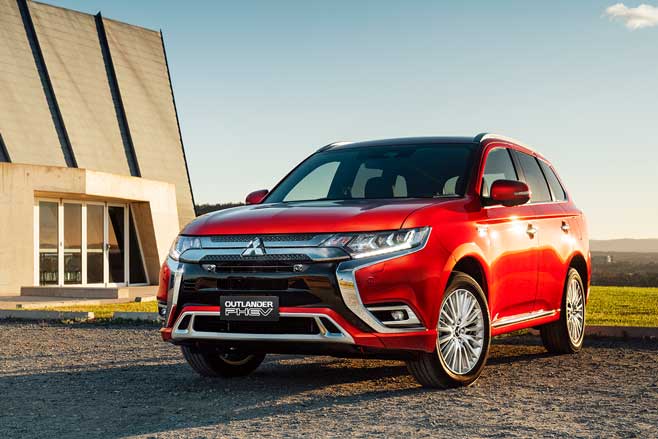
With its electric drivetrain’s quiet and strong performance at town speeds, comfort-oriented suspension, and generous space for its class, the Outlander PHEV continues on course as a mid-size SUV that does a better job at convincing the head rather than the heart, which is no bad thing. Aside from concerns about its aesthetics, it is hard to criticise the rest of the package, the sublime and effortless ease of its electric all-wheel drive system, and its frugality.
The bigger engine does result in a rise in fuel consumption figures, with Mitsubishi claiming a combined consumption figure of 1.9L/100km over the 2.0-litre’s 1.7L/100km. A minor shortfall, though it should be noted that such fuel consumption figures are only possible if you set off with a fully charged battery.
Running the batteries heavily off the 2.4-litre engine would of course make those consumption figures moot, however, our short drive time in Canberra meant that we weren’t able to drain the battery’s 54km all-electric range completely and get a rough idea of how much thirstier the 2.4-litre engine is in real-world conditions. If it is any indication, a comparison between the two engines in the current ASX described the 2.4-litre unit as being “marginally thirstier” than its 2.0-litre counterpart.
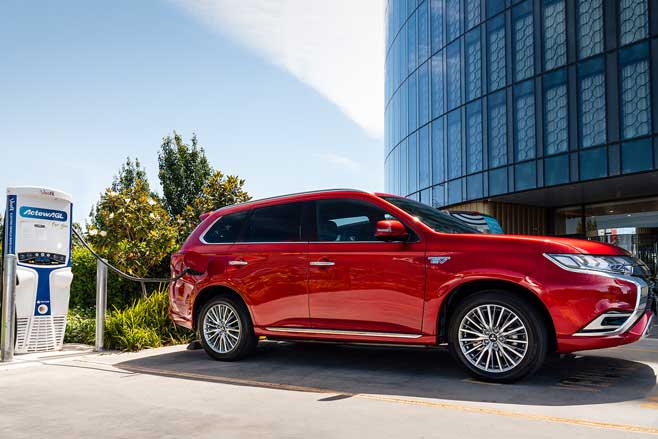
Interestingly enough, the range-topping Exceed comes with a two-way electrical system, which enables the Outlander PHEV to supply power to a home off its battery, a useful feature for households in disaster-prone Japan, though one that has yet to see any wide-spread implementation in Australian homes. Such a system would be useful for suitably-equipped households in blackout-prone regions. Mitsubishi Australia says that inclusion of this feature in the Exceed trim was added to “future-proof” the Outlander PHEV.
As it enters its seventh year, the Outlander PHEV’s interior is starting to feel its age despite Mitsubishi’s best efforts to keep the safety and infotainment systems up to date. The plain dash layout and lackluster material finish won’t inspire compared to its more modern counterparts, but it is well put together with all the basic driver aids and features present.
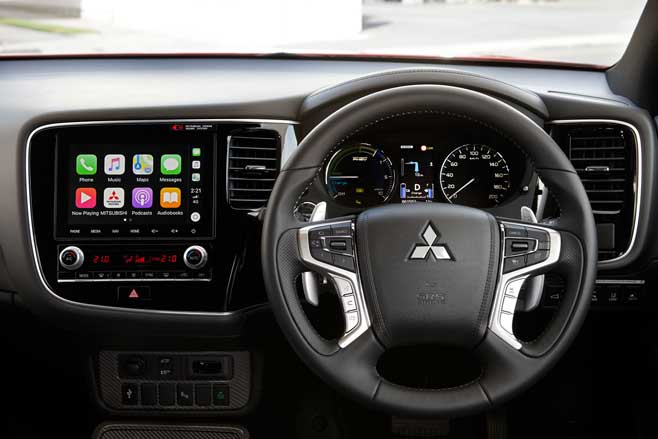
As before, the Outlander PHEV trades the standard models’ third row seating for space to house the electric drivetrain’s control systems and charger. Adding to that the Outlander doesn’t come with a rear lever to fold the second row of seats from the boot, or a one-touch switch to flat-fold the second row of seats; features that are present in many of the Outlander’s competitors.
In terms of day-to-day amenities, the Outlander PHEV’s improved seat cushions do feel more supportive around the lower back than before and the updated infotainment system with Android Auto and Apple CarPlay integration across the range works well too. Unfortunately, the system eschews any physical buttons or switches in favour for small touch sensitive controls, which can be tricky to operate when on the move.
What’s it like to drive?
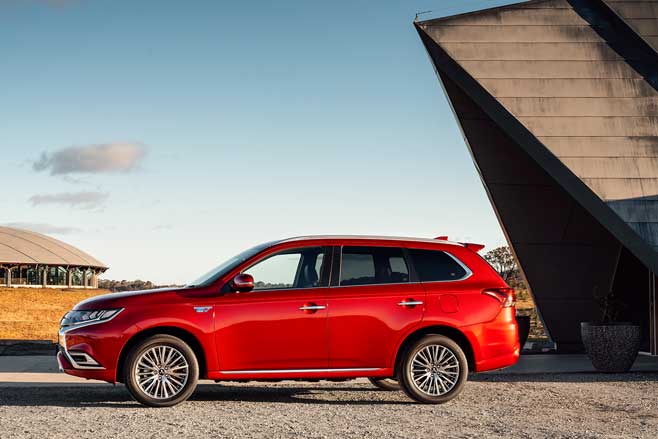
As its “PHEV” tag implies, the Outlander PHEV is predominantly an electric vehicle with the engine riding along as a backup power generator and to assist the motors. With that in mind, most of the time the Outlander PHEV will be paddling around with its two electric motors, dispensing 60kW and 137Nm to the front wheels and 70kW and 195Nm to the rear.
With the electric motors’ immediate torque delivery the Outlander PHEV feels punchier and more responsive off the line any SUV of it size with a naturally-aspirated engine. Mitsubishi says the added power from the electric motors knocks down the 0-100km/h time by 0.5sec to 10.5sec, as the bulk of the torque from the motors are felt in low- to medium-speed pick up.
Where the headline improvements are is in the way the 2.4-litre engine blends seamlessly between all-electric power, acting as a power generator in series hybrid mode, or aiding the electric motors as a parallel hybrid. Where the previous 2-litre engine could be heard stirring into action whenever turned on, the 2.4-litre unit is noticeably more subdued in both noise and vibrations when it activates.

According to Mitsubishi, the bigger engine produces more torque from a lower rpm, which means the engine doesn’t have to rev up that high when charging up the batteries or driving the front wheels, hence producing less intrusive noise and vibrations at low to medium speeds.
The Outlander PHEV’s system will switch between all-electric, series hybrid, and parallel hybrid modes seamlessly, depending on the battery’s current charge and the driver’s accelerator input. If it wasn’t for the PHEV system’s power distribution monitor, it was very difficult to tell if the engine was powering the batteries or the front wheels. That being said, with a single-speed transmission, the engine doesn’t aid the front wheels until the SUV gets to 65km/h and beyond.
Drivers can opt to keep the PHEV system by keeping the system in full EV mode, which will keep the engine from driving the front wheels, until the electric motors run out of puff at a law-breaking 135km/h.
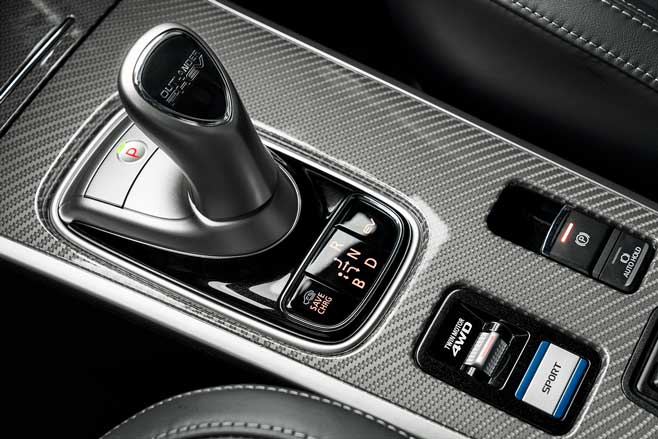
New to the 2020 Outlander PHEV is the inclusion of a ‘Sport’ button, but don’t expect any return of Mitsubishi’s “The Spirit of Competition”. Sport merely sharpens up the throttle response and sets the brake energy regeneration level into the highest of its six settings, which feels like the sort of gentle braking one does when pulling up to a set of lights. As before the brake energy regeneration level can be adjusted through the steering column mounted paddles.
Despite the extensive powertrain improvements, the Outlander PHEV’s ride and handling remains largely unchanged. The steering still lacks feel and the comfort oriented suspension allows a fair bit of body lean, though the PHEV’s responsive turn-in remains, helped with a secure sense of surefootedness in the tighter bends thanks to the electric motors providing permanent all-wheel drive traction. As compared to its 2-litre equipped predecessor, the Outlander PHEV does feel a little tauter in its ride, though it is a minor tweak to the overall drive experience.
Is it worth it?
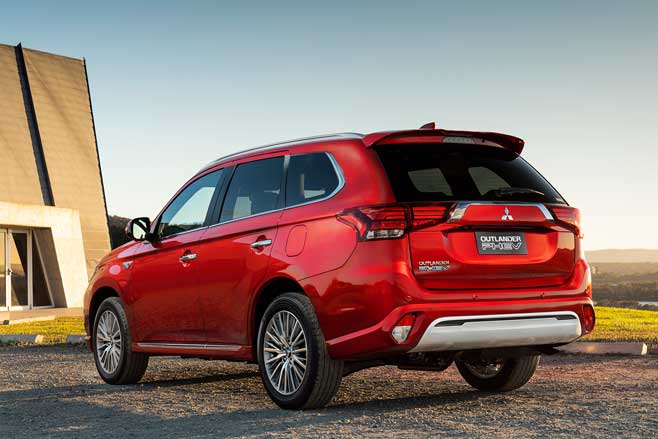
If you really buy into the idea of a plug-in hybrid SUV, the Outlander PHEV is quite literally your only sub-$60,000 option. There are similarly hybrids in the $40-50k region like the $44,640 Toyota RAV4 Hybrid and the $40,990 Hyundai Ioniq sedan. However, the RAV4 doesn’t have the Outlander PHEV’s all-electric range and the Ioniq doesn’t have the ease of entry or rear legroom and boot space that you’d expect from a mid-sized SUV. Its combination of SUV practicality, electric car appeal, and pricing really puts this into a league of its own.
The Outlander PHEV won’t be the right fit for those who don’t have routine access to a car charger, as you’d be paying a hefty “penalty” for lugging around the PHEV drivetrain without reaping its benefits.
While it doesn’t excite in a visceral sense, the Outlander PHEV’s price and package continues through rational conviction, and with the drivetrain update, it is now all the more better for it than it has been in the past seven years.
Pros: Value for money PHEV; engine refinement; sure-footed road holding; ride comfort Cons: Interior really shows its age; lowering the rear seats not as convenient; dull steeringRating: 4/5



